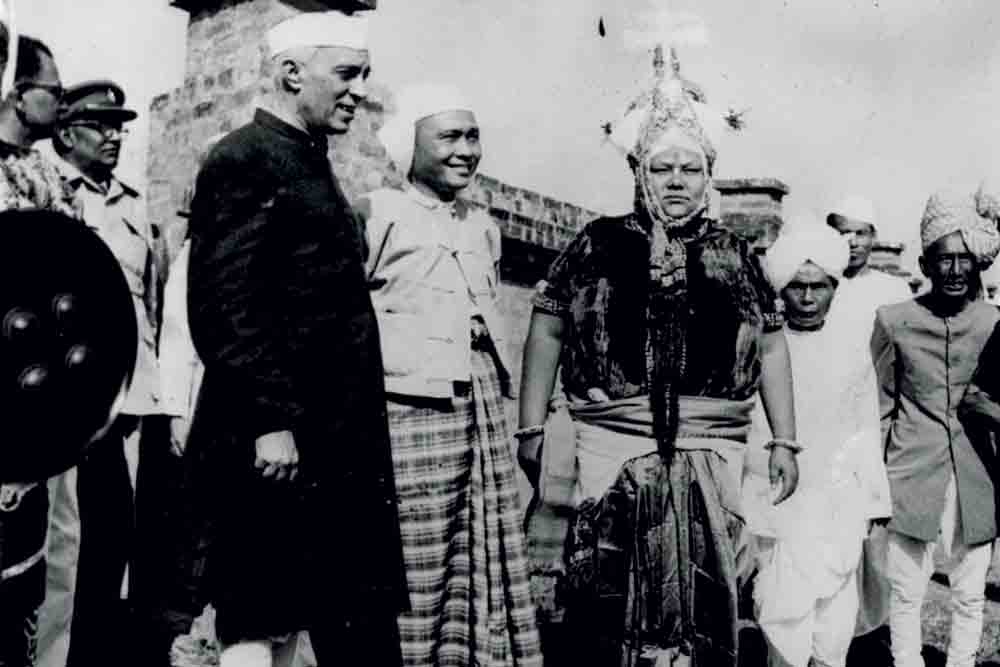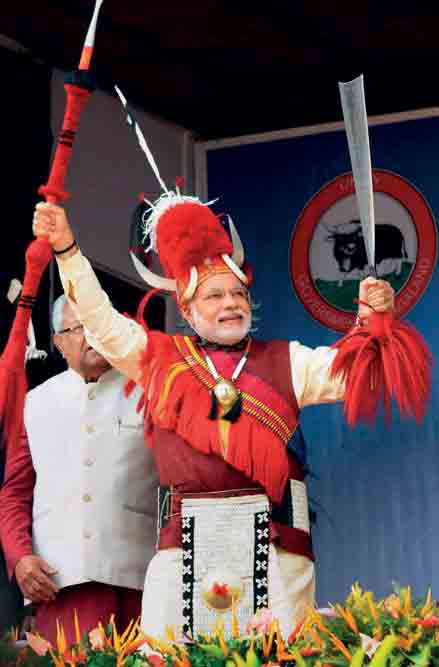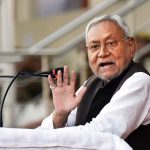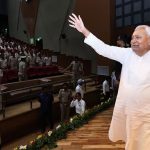Breakout Land
How the Northeast defeated distance
 Rami Niranjan Desai
Rami Niranjan Desai
 Rami Niranjan Desai
Rami Niranjan Desai
 |
09 Aug, 2024
|
09 Aug, 2024
/wp-content/uploads/2024/08/Breakoutland1.jpg)
(Photo: Alamy)
JATINGA IN ASSAM IS LOCATED IN the Dima Hasao district, a few kilometres away from the town of Haflong. Every year a strange event takes place here between the months of September and November, from 7PM to 9.30PM. Migratory birds come here to commit suicide. Some say they lose their sense of direction, others blame it on the fog, and the most common explanation rests on supernatural forces. But that is not the most eerie thing about these areas. I happened to travel there over 15 years ago. The Northeast region of India was still largely unexplored and even though Dima Hasao was the only hill station in the state, that too with an exciting anomaly that took place every year like clockwork, not many travelled to witness it. This was largely because of the fear of active insurgent groups in the area. So, when I reached Jatinga and saw a sign painted on a watchpost that read ‘shoot us with cameras, not guns’, I was naturally confused about who ‘us’ was. Was it the birds, the animals, or the people who lived there? Anyone who knew these areas would be inclined to believe the sign meant people. But then, this really was the zeitgeist of the time, not just in Dima Hasao, but the entire Northeast region of India.
For decades after Independence, the region remained geographically and psychologically isolated from the rest of the country. Considering the scale of India, the Northeast was considered particularly distant, not so much because it was more distant than other regions but because of a myriad of socio-political and historical issues that had plagued the region. The complexity of the nature of issues and conflicts, the lack of connectivity and infrastructure, and the sheer negligence of the impractically carved out Siliguri corridor created an image of an intimidating and un-navigable region.
Early on, the colonial treatment of tribes and their policies of exclusion created faultlines on the basis of their way of life, their ethnicity, and their race. For instance, the creation of the Excluded and Partially Excluded areas meant that they did not receive any benefits, nor were they beneficiaries of any development. Congress at the time was extremely critical of the provision for Exclusion and Partial Exclusion of hill areas. At its annual session held at Faizpur (1936), Congress declared “This congress is of opinion that the creation of the excluded areas is yet another attempt to divide the people of India into different groups with unjustifiable and discriminatory treatment and to obstruct the growth of uniform democratic institution in the country. The separation of these areas is intended for the exploitation of the mineral resources and
forest wealth in these areas and keep the inhabitants of these areas apart from the rest of India for their easier exploitation and suppression. The congress therefore demands the suppression. The congress therefore demands the abolition of excluded and partially excluded areas.”
However, post-Independence, the burden of the past persisted and the faultlines further widened. There was a general apathy towards the region by subsequent governments. First Prime Minister Jawaharlal Nehru made a strange decision to employ Verrier Elwin as his Assam tribal affairs adviser. Elwin, a former missionary, firmly believed that the people of the Northeast, especially the tribal communities, must be isolated to “preserve” their uniqueness. He in all likelihood saw them as the last pagans. In his autobiography, he defends this stance by arguing that his position was only because he felt that they should “only be civilised when they could be civilised properly.” There were many critics of Elwin, such as GS Ghurye, head of department of sociology, University of Bombay, who advocated assimilation but were ignored. Indian socialist leader Ram Manohar Lohia in 1959, commenting on the mismanagement of the Northeast, said in an interview on July 22, 1959: “Why the Indian government is so stupid may partly be explained by the fact that an ex-padre with very peculiar notions, Dr Elwin, is its advisor on Assam tribal affairs. This ex-padre in conjunction with the Prime Minister has evolved a national park theory for the Assam tribal people, which more or less treats them like the Gir lions and isolates them even more from the outside world. Until October last year, pictures of Shiva and Durga, Gandhiji, and even Nehru were not allowed on the walls of shopkeepers, for this ex-padre thought that might either irritate or corrupt the Urvasiam [Northeast] people.”
But this was just the beginning of the mistakes of Nehru’s government. In 1953, when Nehru travelled to Kohima, he was late for a public meeting. The already disgruntled crowd began to disperse. Nehru never forgave them and for the rest of his life refused to visit Nagaland again. In 1962, during the Indo-China war, he gave his premature farewell to Assam. Illegal immigration problems were seen as “provincial” problems. He even threatened the state stating that “if Assam adopts an attitude of incapacity to help in solving the refugee problem, then the claims of Assam for financial help obviously suffer.” But what was beyond comprehension was Nehru’s plan to administer the Northeast region under the foreign ministry, making it easy for missionaries and Western agencies to convince locals that India treated them as foreigners. Finally, this sentiment found its place in the Northeast with some of the longest-running insurgencies and separatist movements taking shape under the Nehru- Gandhi governments.

That is why when I saw the board at Jatinga, the grim humour was not lost on me. Across the region, there were curfews, insurgents collecting taxes, parallel governments being run with full cabinet ministries, parents who could afford it sent their children to safer cities and boarding schools, and those who could not, prayed to the gods to protect their children. As a result, there were hardly any good hotels beyond Guwahati, nor were there any tourists. There were no real restaurants, places to visit safely, roads, or even visibility of the culture and traditions of the people of the Northeast. If you were not from the Northeast, you were called Dkhar, amongst other choicest words depending on the state, and if you were from the Northeast, you were called a chinki (usage of which now carries a five-year jail sentence). India may have gained Independence from the British but it did not feel like Indians were really enjoying this freedom without anxieties and fear. It was Rabindranath Tagore who, in his poem ‘Freedom’, wrote: “Freedom from fear is the freedom I claim for you my motherland! Freedom from the burden of the ages, bending your head, breaking your back, blinding your eyes to the beckoning call of the future.”
However, it was around a decade ago that I started noticing changes. I had lived there and since moving back to Delhi, I travelled as many times a year as I could. The same friends that would move in a convoy if there was a dinner invitation, had started to organise weekend getaways to nearby spots. The same friends who took me out for a meal at the Naga ‘restaurant’, which was actually someone’s home kitchen with a sofa that had two ends missing, compelling you to balance a slant, were now opening restaurants. Every state began to introduce its food with restaurants opening in major cities across the country. In Delhi, the narrow lanes of Humayunpur became the hub for northeastern food. Manipuri, Naga, Mizo, Assamese restaurants, amongst many others, cropped up replacing Delhi’s butter chicken obsession with flavours of bamboo shoot, axone, and the heat of Bhut Jolokia. My friends in Delhi who had remained in a state of disbelief since the first time I travelled to the Northeast, who wondered what I ate, and if dog meat was common, now handed me a list of local produce to carry back for them. Suddenly, the Northeast had become fashionable. The Northeast had come of age.
In 1953, when Nehru travelled to Kohima, he was late for a public meeting. The already disgruntled crowd began to disperse. Nehru never forgave them and for the rest of his life refused to visit Nagaland again. In 1962, during the Indo-China war, he gave his premature farewell to Assam. Illegal immigration problems were seen as ‘provincial’ problems
Back in the Northeast, too, they were coming back from their plush jobs in Delhi and Bengaluru and becoming entrepreneurs. Previously, many residents would refuse to paint their houses and buy nice cars because that would, without fail, attract an extortion demand, which was brazenly called ‘tax’. But they were now not just painting their homes, but creating aesthetics that represented them, their culture. And it was stunning. Music, too, began to bridge divides. The Hornbill music festival in Nagaland became a hit and ‘Festival Tourism’ became a thing, with concerts cropping up across the region. Instead of being infamous for the longest-running separatist movement, Nagaland today is known as the ‘Land of Festivals’ that attracts music partners from as far as Bolivia, Korea and the US. Music from across the region, known for its rhythm, sublime voices, and solid songwriting, was virtually unknown; today, musicians are signing major labels. In the fashion industry as well, advertisers and designers prefer models from the Northeast who have become literally the ‘faces of change’.

The tyranny of distance, which was the average excuse given by many decision-makers, seemed to have been suddenly overcome, fears forgotten. But this dramatic change was only partially organic. While it is true that the resilience of the people of the Northeast is evident from the years of struggle in a state of literal isolation, political will in countries like India counts for much. With the change in dispensation in 2014, the Prime Minister Narendra Modi-led government made the region a primary focus with the Act East policy. He travelled the region over 60 times, more than any other leader in the country. With his massive popularity, the region came into the public eye. Additionally, there was a dual push of the government to increase infrastructure and curb insurgency. Insurgency-related incidents were brought down by 74 per cent and major ceasefire agreements were signed with insurgent groups. As far as development was concerned, one of the most touching and telling stories came from the village of Tali in Arunachal Pradesh. Tali was established in 1957 and until 2007, Airforce AN-32 aircraft used to airdrop ration to the village because there was no road. The 16,000 people of the village patiently waited for development but when it did not happen, many young people like in the other states of the region, moved to bigger cities. It took a staggering 60 years to build a 51-km road. That is why when Arunachal Pradesh Chief Minister Pema Khandu drove up to Tali last year, many cried tears of joy.
The road was just a road to us, but it was a road to freedom for the residents of Tali. Even though they had enjoyed and taken pride in the independence of India from the British, they were not truly free. Just the way Elwin and Nehru’s treatment of the Northeast caged the people of the region, the lack of development stole their opportunities, their true freedom.
Finally, this is not about politics, this is not about elections. This is about creating an India where we celebrate not just 77 years of Independence, but also freedom. Freedom from apathy, freedom from contempt, and freedom from bigotry. Where, when we visit places like Jatinga and see a board that says ‘shoot us with cameras, not guns’, we laugh with joy at the humour of the locals and respond to Tagore’s poem and say, freedom from fear has been claimed in its entirety for you, my motherland! I have released the burden of the ages, I don’t bend my head anymore, I don’t break my back, my blinders are off my eyes, and I can see my future clearly.
About The Author
MOst Popular
3

/wp-content/uploads/2025/07/Cover_Crashcause.jpg)












More Columns
Bihar: On the Road to Progress Open Avenues
The Bihar Model: Balancing Governance, Growth and Inclusion Open Avenues
Caution: Contents May Be Delicious V Shoba